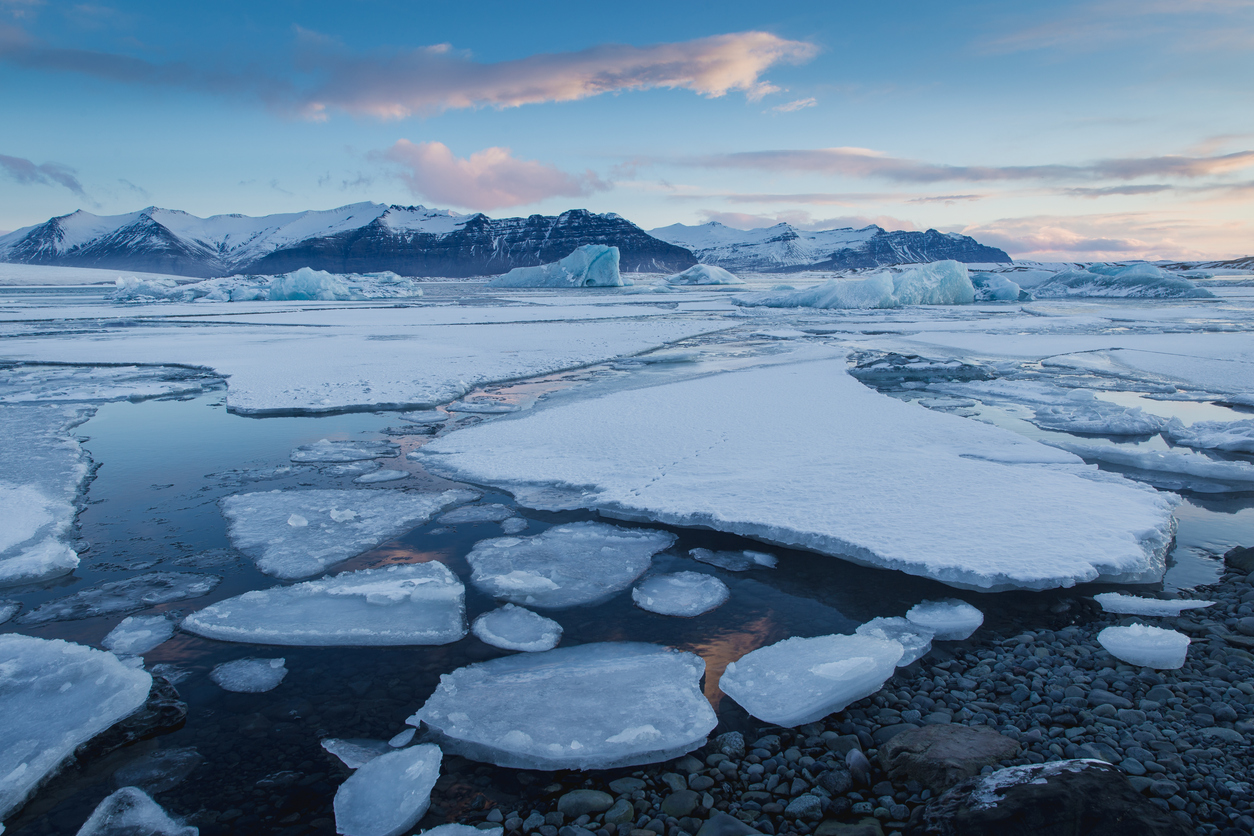Chemistry for Energy and the Environment
 The atmosphere is surreal at dawn in the Jokulsaron lagoon, where seals and a few lucky people can enjoy an endless spectacle, where icebergs float and move slowly dragged by the current.
The atmosphere is surreal at dawn in the Jokulsaron lagoon, where seals and a few lucky people can enjoy an endless spectacle, where icebergs float and move slowly dragged by the current.
When we think about climate feedback loops in the Arctic, thawing permafrost releasing huge quantities of methane is usually the first that comes to mind. But now researchers have discovered that the weathering of sulfide minerals like pyrite, or fool’s gold, is also generating carbon dioxide, and the process is speeding up as the region warms.
“We know sulfide oxidation processes are common in the Arctic, but there hasn’t been a long time series to show how it has changed,” says Suzanne Tank, who studies biogeochemistry at the University of Alberta.
Working with colleagues from Oxford University in the UK, Tank used 60 years of data from Environment Canada on sulfate concentration in river water from the Mackenzie River basin to investigate how they responded to temperature changes over time. Sulfide weathering produces both sulfate and, via a complex reaction involving sulfuric acid being buffered by carbonate minerals, inorganic carbon and then CO2. So sulfate concentrations in water can be used to track how fast this process is occurring and infer how much CO2 is being produced. The work was published in Science Advances.
“The trends were really quite strong,” says Tank. Between 1960 and 2020 sulphide weathering increased by 45% while average temperatures increased 2.3oC. Assuming a moderate climate warming scenario in the future, CO2 from sulfide weathering could double by 2100, to around three megatonnes a year. That’s half the total emissions released by Canada’s domestic aviation sector in 2021. This source of inorganic carbon could result in a feedback loop that accelerates climate change.
Rising temperatures can cause increased weathering in several ways, says Tank. The chemical reaction itself happens faster as temperature goes up, but conditions that expose more of the rocks to the atmosphere, such as thawing permafrost, also speed up the process. More frequent freeze-thaw cycles under warmer conditions can also cause them to shatter, increasing the surface area available for weathering. “This ‘mechanical weathering’ exposes the surface area and you get increased chemical weathering as a result,” she says.
Elliott Skeirszkan, an environmental geoscientist at Carleton University in Ottawa, says the study highlights an underappreciated source of carbon emissions. “The notion of biogenic carbon dioxide from permafrost is one that’s relatively easy to stitch together because permafrost is well known to contain a huge amount of organic carbon, but this study is a bit of an indirect link that involves mineral reactions,” he says. “I think this will motivate people looking at global CO2 emissions to consider whether it is an important piece of the picture or not.”
Tank says we need to account for these other processes when thinking about how climate change is affecting the Arctic, and how changes in the Arctic are affecting the rest of the climate system. “We’re changing a suite of things and this is leading to a whole set of ramifications. This is one that hasn’t received much attention,” she says.


